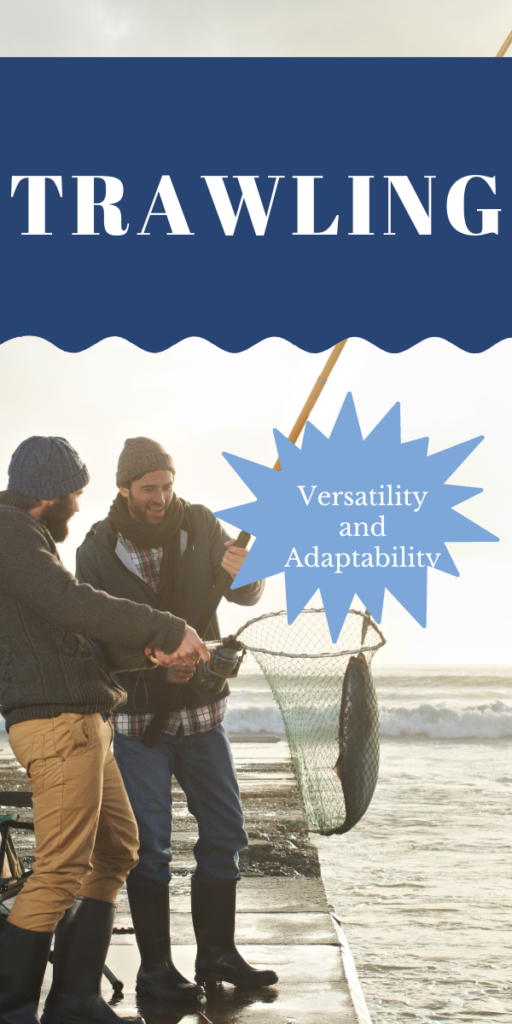Trawling, a method of fishing that involves dragging a net through the water, is a critical component of the global fishing industry. Despite environmental concerns, trawling offers several advantages that contribute significantly to food supply chains, economic stability, advantages of trawling and technological innovation in the marine sector.
jump to a specific section
High Efficiency and Productivity
One of the standout benefits of trawling is its unparalleled efficiency. Advantages of Trawling Trawling nets can capture a substantial amount of marine life in a single haul, making it one of the most productive fishing methods available.
able 1: Comparison of Fishing Methods by Productivity
| Fishing Method | Average Catch per Hour (kg) |
|---|---|
| Trawling | 1,200 |
| Longlining | 150 |
| Gillnetting | 300 |
| Handline Fishing | 20 |
Advantages of Trawling Versatility and Adaptability
Trawling is highly versatile and can be adapted to various marine environments, from shallow coastal waters to the deep sea Advantages of Trawling. This adaptability makes it suitable for capturing a diverse range of species, ensuring a consistent and varied supply of seafood.

Technological Advancements
Advancements in technology have significantly improved the sustainability and efficiency of trawling. Innovations such as bycatch reduction devices and improved net designs help minimize environmental impact while maintaining high productivity.
Table 2: Technological Innovations in Trawling
| Innovation | Description |
|---|---|
| Bycatch Reduction Devices | Tools to prevent non-target species from being caught |
| Turtle Excluder Devices | Allow turtles to escape from shrimp trawls |
| Improved Net Designs | Reduce bottom contact and environmental impact |
These innovations demonstrate how technology is helping to address some of the environmental concerns associated with trawling, making it a more sustainable option.
Sustainable Practices
Efforts to develop and implement sustainable trawling practices are ongoing. Programs that certify sustainable seafood, such as the Marine Stewardship Council (MSC), encourage the adoption of best practices and technological innovations that reduce environmental impacts.
Contribution to Food Security
Trawling plays a critical role in global food security. By providing a significant portion of the world’s seafood supply, trawling helps meet the nutritional needs of millions of people worldwide. Fish is a vital source of protein, omega-3 fatty acids, and other essential nutrients, particularly in developing countries where alternative protein sources may be scarce or expensive.
Nutritional Benefits
The seafood harvested through trawling is rich in essential nutrients that are crucial for maintaining health. Regular consumption of fish can help reduce the risk of chronic diseases, support brain health, and contribute to overall well-being.
Research and Development
The ongoing research and development in trawling technology and methods are geared towards further improving the efficiency and sustainability of this fishing method. Collaboration between scientists, fishermen, and policymakers is Advantages of Trawlin essential to address the challenges and enhance the benefits of trawling.
Future Prospects
With continued investment in research and technology, the future of trawling looks promising. Innovations such as autonomous trawling vessels and real-time monitoring systems have the potential to revolutionize the industry, making it even more efficient and environmentally friendly.
Year-Round Fishing
trawling technology enables fishing operations to continue effectively throughout various conditions and seasons. Unlike some fishing methods that are limited by weather or seasonal changes, modern trawling techniques are equipped to handle different environmental conditions. This capability ensures a steady and reliable supply of seafood, meeting market demands consistently. The ability to fish year-round helps stabilize seafood supply chains and supports the global seafood industry by providing fresh products irrespective of seasonal fluctuations.
conclusion
While trawling has faced scrutiny for its environmental impact, its advantages in terms of efficiency, economic benefits, versatility, and adaptability are substantial. With ongoing technological advancements, trawling can continue to evolve into a more sustainable practice, balancing productivity with environmental stewardship. Trawling, a method of fishing that involves dragging a large net through the water, is a cornerstone of the global fishing industry. Despite its environmental controversies, trawling offers numerous advantages that significantly contribute to the food supply chain, economic stability, and technological innovation in the marine sector. This article explores the key benefits of trawling, supported by data and insights to provide a balanced understanding.